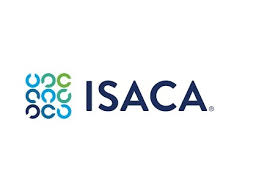How Does Student Management System Helps In Improving Output

A student management system (SMS) is a software application designed to help schools, colleges, and universities manage student data and operations more efficiently. A good SMS can streamline administrative processes, improve communication, and provide insights to help raise academic results and overall institutional performance.
Ways Through Which Student Management System Helps In Improving Output
Here are some of the key ways a student management system can help improve output:
Streamlining Administrative Processes
One of the major benefits of implementing an SMS is that it automates time-consuming manual tasks and consolidates data into a central database.
This means staff spend less time on administrative work and have more time for high-value tasks like teaching, counseling, and strategic planning. Specific process improvements include:
- Admissions management: SMS provides an online application portal for collecting and reviewing applicant details and documents. Automated filtering, shortlisting, and communications remove paperwork and delays.
- Registration and enrollment: SMS allows students to sign up for courses online. Automated timetabling and scheduling prevent clashes. Real-time class capacity tracking prevents oversubscription.
- Fee collection: SMS enables online fee payment via multiple modes. Automated generation of invoices, receipts, and reminders reduces accounting workload.
- Attendance monitoring: Daily student attendance is marked via SMS or biometrics integration. Automated absentee alerts are sent to parents. Aggregate attendance reports help track student progress.
- Exams and assessments: SMS assists with scheduling and room allocation for exams. Online grade capture and automated score compilation eliminate manual processes.
- Reports and analytics: SMS generates custom reports on all student data for fact-based decisions. No more manually collating data from disparate sources.
By streamlining repetitive administrative work, an SMS frees up staff to deliver value in roles like counseling, teacher training, and educational leadership. This directly improves teaching quality, school management, and strategic planning – all of which enhance student outcomes.
Improving Communication
A major part of managing students is keeping them and their parents continuously informed. An SMS improves school-to-student and school-to-parent communications through:
- Automated notifications and alerts for attendance, homework, exams, fees due, school events, and more via email, SMS, and mobile apps. It is reaching mass audiences efficiently.
- Online discussion forums for students and teachers to collaborate beyond the classroom. Secure class and peer-to-peer forums are facilitated.
- Knowledge-sharing platforms allow schools to publish web content, newsletters, handbooks, etc. to engage students. Host online resources and recorded lectures via a Learning Management System.
- Parent and student access portals give convenient 24/7 access to grades, assignments, timetables, fee status, and other data. Greatly increases transparency.
- Teacher-parent messaging enables confidential direct messaging between teachers and parents within the system. Far more effective than traditional parent-teacher physical meetings.
By handling routine mass communications electronically, an SMS gives teachers more time for personal interactions with students and parents for mentoring. The continuous flow of data also keeps students engaged and informed, improving the learning experience.
Analytics and Insights
A sophisticated school management system comes with rich analytics capabilities to help administrators, teachers, and parents make data-driven decisions about student development:
- Student profiling with demographic, family, academic, and co-curricular data gives a 360-degree view of each student. Helps design personalized programs based on interests and strengths.
- Attendance analysis identifies patterns of absenteeism across sections, classes, or demographics. Allows corrective policies to be formed.
- Assessment analytics provide deep performance insights at class, subject, and student levels. It helps shape teaching methods, academic support, and interventions.
- Behavioral tracking uses merits, demerits, and detention data to flag problematic student conduct early. Enables counseling.
- Drop-out predictor uses ML on past patterns to forecast potential drop-outs. Proactive counseling and remediation are possible.
- Learning analytics assess gaps in curriculum or teaching methods via student performance data. Allows pedagogical improvements.
Data-driven insights from an SMS enable administrations to track performance, identify issues, and design effective interventions for both students and institutions. The result is continuous improvement in academic quality and student outcomes.
Features of a Good SMS
With the vital role a student management system plays in a school’s performance, selecting the right SMS is critical. Some key features to evaluate include:
- Cloud-based SaaS model – Centrally hosted solution accessed easily via web browser from anywhere. Enables real-time data.
- Student profiles – Consolidates all data like enrollment, attendance, academics, assessments, fees, transportation, etc. in one place.
- Parent access – Mobile and web portal for parents to view data like grades, homework, attendance, and timetables and communicate with teachers.
- Learning Management – Tools for teachers to share resources, host online lessons, and create assignments and forums. Students submit work online.
- Mobility – Native mobile apps for parents, students, and teachers to view and update records on the go. Offline sync facility.
- Administration – Dashboard for management and administrators with data visualizations, reports, and analytics. Controls for user and permissions management.
- Security – Robust access controls, encryption, data security, and user authentication are essential. Must comply with education data privacy regulations.
- Customization – Flexibility to add custom fields, forms, and workflows to suit unique institutional needs. Open API for third-party integrations.
- Scalability – The system must scale across multiple schools, thousands of users, and large multimedia files without performance issues.
With student data centralizing on the SMS, continuous uptime and support is also critical. When comparing providers, check for resources dedicated to product enhancement, training, support, and SLAs.
Benefits Of Student Management System
Implementing an end-to-end SMS like a school management system provides profound benefits for educational institutions:
For Administrators
- Streamlines administrative processes for efficiency
- Provides data and insights for better strategy and decision-making
- Improves parent and student engagement and satisfaction
- Simplifies regulatory and audit compliance
For Teachers
- Automates routine tasks like attendance and grading
- Enables paperless processes
- Improves communication with students and parents
- Allows sharing of online learning resources
- Facilitates flipped classrooms and blended learning
For Students
- 24/7 access to grades, assignments, and timetables on mobile
- Interactive online learning and collaboration
- Increased ownership through data access and transparency
For Parents
- Real-time visibility into academics, attendance, fees
- Better connectivity with school and teachers
- Ability to participate more in student progress
Conclusion
A student management system like a school management system has become essential for schools, colleges, and universities to deliver higher-quality education while optimizing administrative efficiency.
Selecting and implementing the right SMS solution can help streamline processes, improve communication, provide data-driven insights, and raise academic results for students and institutions alike. With education increasingly going digital, especially after COVID-19 impacts, the SMS is set to become the command and control center for delivering success in education.
How is an SMS different from traditional paper records?
An SMS consolidates all student data digitally in a centralized database. This enables automation, real-time visibility, collaboration, and analytics not possible with paper records scattered in silos.
Is SMS software expensive?
Due to the SaaS delivery model, SMS software typically has a simple per-user per-month licensing cost structure. This is far more affordable than traditional on-premises solutions. The ROI is delivered via process efficiency and performance gains.
Is student data secure on the SMS?
Reputable SMS solutions like school management systems employ enterprise-grade security like encryption, access controls, and compliance with regulations like FERPA to safeguard student data privacy. Security is a critical evaluation criterion.
Does an SMS integrate with other Edtech solutions?
A modern cloud-based SMS provides open APIs and out-of-the-box integrations with complementary Edtech like online assessments, virtual classrooms, payments, etc. This enables an integrated technology ecosystem.
Can an SMS help improve student results?
An SMS provides data-driven insights into student performance that allow targeted interventions. Administration efficiencies free up teachers to innovate. Together this enhances educational quality, student engagement, and outcomes.



